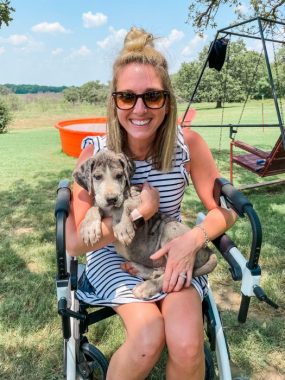Navigating Hope and Worry With Friedreich’s Ataxia

The word “hope” has been woven through many of my conversations lately, especially in the last week.
I’m participating in a clinical trial, and I had my first in-person visit in nearly two years. I am supposed to go every six months, but flying across the country for an appointment in a hospital was an unsafe impossibility in light of the COVID-19 pandemic. I felt hopeful that our corner of the world was starting to recover from the pandemic, and that the medical community would be able to shift its focus back to other priorities, like curing Friedreich’s ataxia (FA).
My friends and family sent well wishes, hoping I would have a good checkup, receive positive news, and feel encouraged by the appointment. And while it did feel good to have one more aspect of my life return to normal, I was dreading the neurological exam that quantifies and tracks my symptom progression. Normally, my progression isn’t too obvious after six months, but I knew that wouldn’t be the case after nearly two years.
My heart felt full of hope and my head full of worry. I couldn’t reconcile and make sense of my feelings because they were all over the map. I felt so encouraged and prepared because of the support from my village, but I also felt uncertainty and fear about what I was walking into (pun intended).
The appointment went as expected. And my progression was as obvious and discouraging as I thought it would be. My head, full of worry, was squashing the hope out of my heart because it had received validation.
But there was another big emotional roller coaster that I was simultaneously riding: the pursuit of a mobility service dog.
A friend of mine got a trained mobility service dog when she was at my stage of symptom progression. Her dog, a Great Dane, was actually able to replace her walker for a few years. I spent a lot of time talking to her and researching the concept, logistics, and options.
I became obsessed with the idea of replacing my walker, which I deeply dislike and am simultaneously so incredibly grateful for, with a true companion. My feelings of resentment toward my walker have been growing for a while now. I am becoming increasingly dependent on it, but moreover, it doesn’t seem like enough lately.
My walker only helps me when I’m walking. And I need help beyond just walking from point A to point B. A walker can’t help me get up out of chairs, off of the ground, out of the car, into the pool, up and down steps, and so on. It can’t help me unless I bring it with me or unless someone brings it to me. And considering it’s an inanimate object, I can’t make it come to me. I have to take unassisted steps to get to it, and that is getting progressively dangerous. But a service dog can help me overcome those obstacles.
A service dog represents hope. It’s a magnificent animal trained to quite literally walk this FA journey with me. The physical embodiment of help, of never being alone. The idea fills my heart and mind with hope.
I found trainers nearby that will come to my house and train my service dog to meet my specific needs. All that was left to do was to find the right dog. The trainers guided me through temperament testing, and after hours of exhaustive research, I found the perfect companion for me.
I’m pleased to introduce Hank, the mobility service Great Dane. He will start obedience training in the coming weeks, then group classes, public training, and mobility training. He is just 10 weeks old now, but the plan is for him to supplement my walker by 10 months, and hopefully replace it when he is 1.5 years old.

Kendall and Hank, her Great Dane mobility service dog in training. (Courtesy of Kendall Harvey)
All of this is to say it’s OK if you don’t feel hopeful all the time. There is always a battle between the heart and the mind. Both hope and worry are valid feelings.
I encourage you to find projects that inspire hope in both your heart and mind, and to surround yourself with people that can provide you with hope when you can’t summon it on your own. There is true joy to be found in the pursuit of hope. You just have to strive for it.
***
Friedreich’s Ataxia News is strictly a news and information website about the disease. It does not provide medical advice, diagnosis or treatment. This content is not intended to be a substitute for professional medical advice, diagnosis, or treatment. Always seek the advice of your physician or another qualified health provider with any questions you may have regarding a medical condition. Never disregard professional medical advice or delay in seeking it because of something you have read on this website.The opinions expressed in this column are not those of Friedreich’s Ataxia News or its parent company, Bionews, and are intended to spark discussion about issues pertaining to Friedreich’s ataxia.








Tonia Britton
Is there a way to contact Kendall Harvey? I have a 26 yr old son with FA, diagnosed at19/20 and we are needing mobility aide (he refuses walker) Would love more info on this idea & also any guidance for assistance in aide and other services